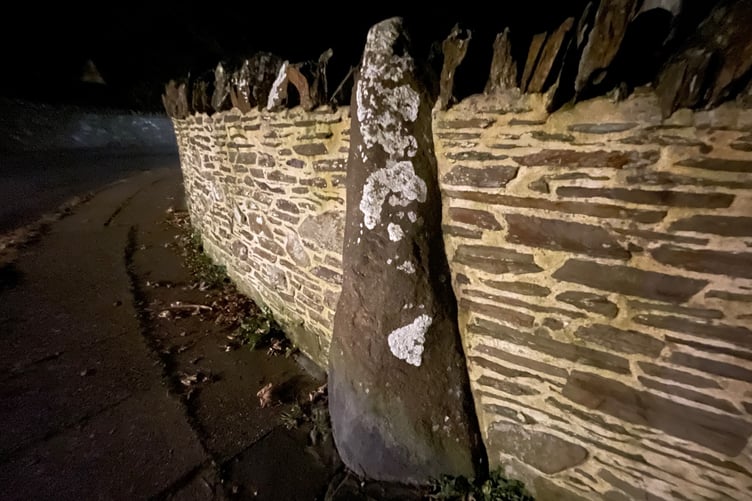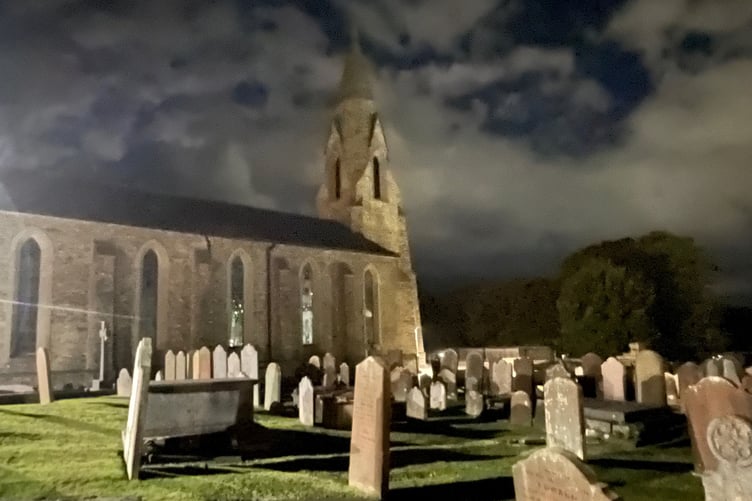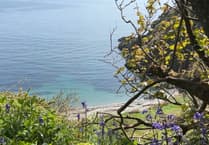To many, Onchan is little more than a bland suburb of Douglas with a congested main road and a small shopping precinct.
But the village has a rich history and many mysterious and macabre stories to tell as reporter and Onchan resident James Campbell finds out.
I grew up in Onchan and I’m currently back living there now after many years away.
But me, like many others, have been hard on my home village, perhaps because the only major developments in my lifetime have been housing.
A good many of us are guilty of taking what is on our doorstep for granted and this is certainly the case for Onchan.
Recently, with Hop tu Naa on the horizon and looking into fairy bridges, I was delving into folklore and ghostly stories. I was expecting wondrous tales from our isolated glens and mysterious mountainous landscapes.
However, while I had heard snippets of Onchan’s dark tales, I was surprised by just what a hotbed this area is.
Perhaps the most intriguing and most shocking relates to an odd haunting in the village.
It’s hard to picture the busy and often congested Main Road in the village being the scene of a ghostly apparition.
.jpeg?trim=56,0,133,0&width=752&height=501&crop=752:501)
There are reports a ‘death coach’ sometimes rides through Onchan at night. Some say it’s invisible and can only be heard while others claim to have seen a black coach drawn by headless horses ride silently by.
Inevitably, some say it is the work of fairies but there is a far more interesting belief, based in the human world.
It is said the coach belongs to a man named Spurrier, who was murdered by the infamous Victorian poisoner, Dr Willaim Palmer in the early 1850s.
Palmer was convicted of poisoning his friend John Cook for which he was hanged but it is believed he killed more, including his own children and Onchan resident Spurrier.
Four or five years prior to his murder conviction and execution, Palmer paid a visit to the Isle of Man, where his brother and family lived. While here, he befriended Spurrier.
Spurrier was a bachelor with plenty of money who drove a splendid pair of bays in tandem.
Spurrier was often seen in the coach with Palmer at his side. On the last occasion they drove to Peel and dined at the Marine Hotel.
.jpeg?trim=121,0,397,0&width=752&height=501&crop=752:501)
When dinner was finished, Palmer offered to bet Spurrier £50 that he could not swallow 20 raw eggs within a given space of time. Spurrier at once accepted the bet and not long after Spurrier fell suddenly ill and died before morning. Palmer remaining with him the whole night.
The matter was hushed up with no inquest held and Spurrier was taken to his home and buried in St Peter’s Churchyard.
There was a rumour that, shortly before his death, Spurrier had £1,000 in cash on him but it was never found.
At the time, no suspicion fell on Palmer but, when he was subsequently tried and convicted for murder, public opinion in the Island strongly leaned to the conclusion that Spurrier had been murdered and robbed by Palmer.
The house where Spurrier used to live was once a famous haunted house. But it was pulled down long ago and is now where the Co-op stands.
Another Onchan oddity is on the boundary wall of St Peter’s Church at the top end of The Butt where you can spot a strange stone which does not seem to fit in. This is in fact the ‘whipping post’ which was once used to mete out punishments.

However, there were reports the stone was being used for pagan fertility rites which outraged the then wife of the vicar, Grissel Quayle, in 1768. She immediately had the stone pulled up and removed.
Sadly, it appears to have been a fatal mistake as just a short time later a ball of lightening shot down her chimney and killed her in her bed. The whipping post was quickly returned to where it still stands today.
If you find yourself on the hill of Whitebridge, adjacent to Bibaloe Glen, late at night – and I question why - you might hear the ghostly sounds of a murder which happened long ago.
You cannot see anything but you may hear the blows of the attacker, the groans of the victim and the murderer galloping away on a horse.
Nearby is Molly Quirk’s Glen which is named after the woman whose ghost still haunts the area.

It is said that during her lifetime, Molly was successful in building up a store of money, until she was robbed and murdered one night in the glen. Her ghost can sometimes be seen walking in her glen.
I have spent many a day in the glen as a child and more recently but have never crossed paths with Molly thankfully.
But it isn’t just murderous hauntings in Onchan. It has it’s fair share of folk tales too.
In the book ‘The Folk-lore Of The Isle Of Man’ (1891), Arthur William Moore gives an account of a farmer’s chance encounter with a tarroo-ushtey or ‘water bull’ in farmland near Groudle.
He said: ‘A few years ago the farmer of Slieu Mayll, in the parish of Onchan, was, on a Sunday evening, returning home from a place of worship, when at the garee of Slegaby, a wild-looking animal, with large eyes, sparkling like fire, crossed the road before him, and went flapping away.
‘This he knew to be a tarroo-ushtey for his father had seen one at nearly the same place. Over the back of this animal he broke his walking-stick, so lazy was it to get out of his way.
.jpeg?trim=0,21,0,21&width=752&height=501&crop=752:501)
‘This man’s brother had also seen a Tarroo-Ushtey, at Lhanjaghyn, in the same neighbourhood. When proceeding to the field, very early one morning in the month of June, to let the cattle out to feed before the heat of the day came on, he saw a water bull standing outside the fold.
‘When the bull that was within with the cattle perceived the tarroo-ushtey, he instantly broke through the fence, and ran at him, roaring and tearing up the ground with his feet.
‘But the tarroo-ushtey scampered away, seeming quite unconcerned, and, leaping over an adjoining precipice, plunged into deep water, and after swimming about a little, evidently amusing himself, he gave a loud bellow and disappeared.’
Perhaps the strangest of all takes relates to a phallic stone that could move by itself which was also mentioned . Yep, I’m not sure what they had been smoking either!
The site of St Peter’s is thought to have been a centre for pagan rights at one time.
According to the Welsh monk and historian Nennius, the Wonder Stone was a relic of these pagan rituals and Christians would get rid of it by throwing over the cliffs at Howstrake and into the sea.
But it always seemed to return to its original spot. Priests decided to built a wall around it within the churchyard but it still attracted lovers wishing to perform fertility rites.
This led to a vicar’s wife taking the stone and burying it in a bog which seemed to work and it never returned.
According to the asmanxasthehills website, the stone was located by William Cubbon, of the Manx Museum and now lies in the cellars of the museum.


.jpeg?width=209&height=140&crop=209:145,smart&quality=75)

